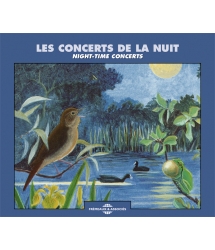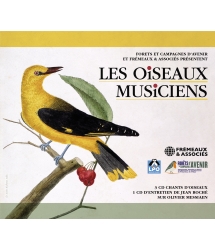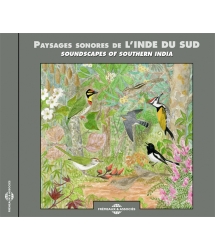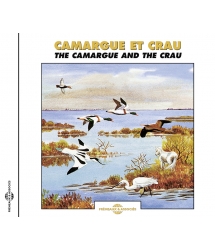- Our Catalog
- Philosophy
- Philosophers of the 20th century and today
- History of Philosophy (PUF)
- Counter-History and Brief Encyclopedia by Michel Onfray
- The philosophical work explained by Luc Ferry
- Ancient thought
- Thinkers of yesterday as seen by the philosophers of today
- Historical philosophical texts interpreted by great actors
- History
- Books (in French)
- Social science
- Historical words
- Audiobooks & Literature
- Our Catalog
- Jazz
- Blues
- Rock - Country - Cajun
- French song
- World music
- Africa
- France
- Québec / Canada
- Hawaï
- West Indies
- Caribbean
- Cuba & Afro-cubain
- Mexico
- South America
- Tango
- Brazil
- Tzigane / Gypsy
- Fado / Portugal
- Flamenco / Spain
- Yiddish / Israel
- China
- Tibet / Nepal
- Asia
- Indian Ocean / Madagascar
- Japan
- Indonesia
- Oceania
- India
- Bangladesh
- USSR / Communist songs
- World music / Miscellaneous
- Classical music
- Composers - Movie Soundtracks
- Sounds of nature
- Our Catalog
- Youth
- Philosophy
- News
- How to order ?
- Receive the catalog
- Manifesto
- Dictionnary











- Our Catalog
- Philosophy
- Philosophers of the 20th century and today
- History of Philosophy (PUF)
- Counter-History and Brief Encyclopedia by Michel Onfray
- The philosophical work explained by Luc Ferry
- Ancient thought
- Thinkers of yesterday as seen by the philosophers of today
- Historical philosophical texts interpreted by great actors
- History
- Books (in French)
- Social science
- Historical words
- Audiobooks & Literature
- Our Catalog
- Jazz
- Blues
- Rock - Country - Cajun
- French song
- World music
- Africa
- France
- Québec / Canada
- Hawaï
- West Indies
- Caribbean
- Cuba & Afro-cubain
- Mexico
- South America
- Tango
- Brazil
- Tzigane / Gypsy
- Fado / Portugal
- Flamenco / Spain
- Yiddish / Israel
- China
- Tibet / Nepal
- Asia
- Indian Ocean / Madagascar
- Japan
- Indonesia
- Oceania
- India
- Bangladesh
- USSR / Communist songs
- World music / Miscellaneous
- Classical music
- Composers - Movie Soundtracks
- Sounds of nature
- Our Catalog
- Youth
- Philosophy
- News
- How to order ?
- Receive the catalog
- Manifesto
- Dictionnary
SONGS FROM THE DEEP - RECORDINGS OF WHALE SOUNDS
FREMEAUX & ASSOCIES
Ref.: FA624
Author : 23|130
Artistic Direction : JEAN ROCHE
Label : Frémeaux & Associés
Total duration of the pack : 57 minutes
Nbre. CD : 1
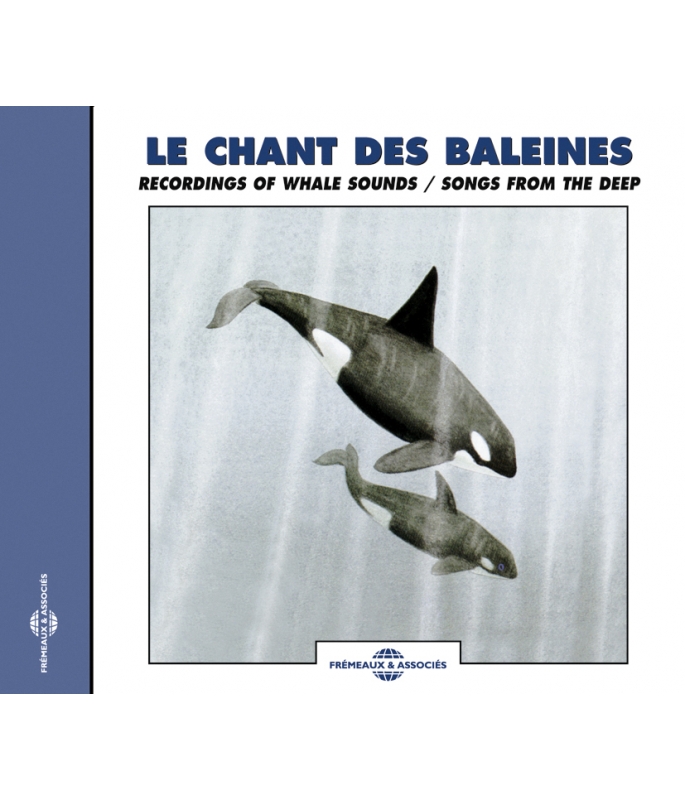
SONGS FROM THE DEEP - RECORDINGS OF WHALE SOUNDS
SONGS FROM THE DEEP - RECORDINGS OF WHALE SOUNDS
“This CD of a new kind allows the listener to listen to the Voices of the Ocean. On the 58 minutes of this CD you will hear the songs and calls – indeed, the “language” – of 5 species of Cetacea. Jean C. Roché realized this recording thank to the Marine Mammal Fund in San Francisco and its director, Mr Stan Minasian, who supplied him with rare and beautiful sounds.” Patrick Frémeaux
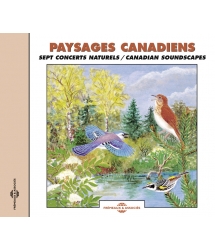
SEPT CONCERTS NATURELS
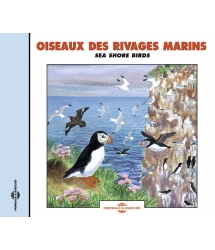
SEABIRDS - SEA SHORE BIRDS
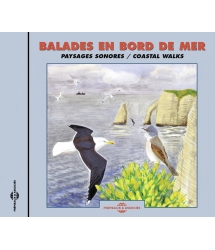
WALKS ON THE FORESHORE - COASTAL WALKS
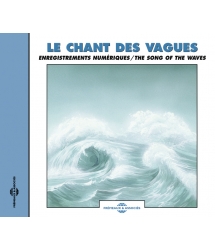
SOUNDS OF SEA WAWES - THE SONG OF THE WAVES
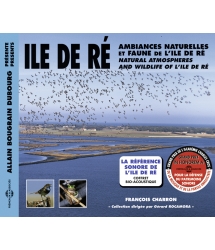
NATURAL ATMOSPHERES AND WILDLIFE OF L'ILE DE RE







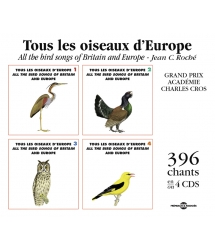
-
PisteTitleMain artistAutorDurationRegistered in
-
1L'Orque Grand Rassemblement00:07:131992
-
2L'Orque Petit Groupe00:05:151992
-
3Le Beluga00:04:321992
-
4Le Narval00:09:061992
-
5La Baleine à Bosse à Gordo Bank00:06:571992
-
6La Baleine à Bosse à Hawaii00:08:351992
-
7La Baleine Franche Boreale dans l'Océan Arctique00:07:091992
-
8La Baleine Franche Boréale00:09:041992
LE CHANT DES baleines
LE CHANT DES baleines / SONGS from the deep
Introduction
Avec ce premier CD sur les voix de quelques baleines, Sittelle lance une nouvelle collection qui s’intitule “Les Voix de l’Océan”.
Vous entendrez ici, pendant 8 enregistrements d’une durée totale de 58 minutes, les chants et cris – je devrais dire le langage – de 5 espèces de cétacés :
1. L’Orque
2. Le Beluga
3. Le Narval
4. La Baleine A bosse ou Mégaptère
5. La Baleine franche boréale
Il existe près de 80 espèces de cétacés dans les océans et mers du monde, dont beaucoup n’ont pas encore été enregistrées. Certaines sont menacées, voire en voie de disparition. On distingue d’une part, les cétacés à fanons (Baleines vraies, Rorquals, Mégaptères) et les cétacés à dents (Cachalots, Mésoplodons, Berardius, Narval, Béluga, etc.), et d’autre part, la grande famille des Dauphins (Dauphins, Lagenorhynques, Lissodelphis, Cephalorhynques, Globicéphales, Orques, Marsouins, etc.), qui sont en règle générale de taille plus petite. Je remercie le Marine Mammal Fund et son directeur M. Stan Minasian qui nous ont permis d’éditer ces magnifiques enregistrements. Si vous souhaitez acquérir un livre en complément de ce CD, nous vous recommandons l’ouvrage en 2 volumes de Jean-Pierre Sylvestre : 1. Baleines et Cachalots – 2. Guide des Dauphins et Marsouins, paru chez Delachaux et Niestlé. Il est facile à lire, très complet et abondamment illustré.
Commentaires
1. L’ORQUE / Orcinus orca
C’est en fait un énorme Dauphin qu’on appelle aussi Épaulard, et qui peut mesurer près de 10 mètres de long. On le trouve dans toutes les mers, froides, tempérées et chaudes, mais surtout le long des côtes. Il est bleu-noir avec de grandes taches blanches (dessin de couverture). Il émet toutes sortes de cris, ainsi que des cliquetis puissants.
a) Enregistrement d’un grand rassemblement à San Juan Island 7’12”
b) Enregistrement d’un petit groupe 5’14”
2. LE BELUGA / Delphinapterus leucas
Cette petite Baleine de la famille des Monodontidés n’atteint que 5 ou 6 mètres de long et ne se rencontre que dans les océans de l’hémisphère Nord. Elle pénètre régulièrement dans l’embouchure de certains fleuves, comme le Saint-Laurent au Canada. Les adultes âgés de plus de cinq ans deviennent entièrement blancs. Les cris des Bélugas sont aigus et les marins les ont remarqués depuis fort longtemps, les comparant à des chants d’oiseaux.
c) Enregistrement réalisé dans le Pacifique Nord 4’31”
3. LE NARVAL / Monodon monoceros
C’est un cétacé de légende avec sa corne unique, étrange, longue et fine, qui l’a fait surnommer “Licorne de mer”. Cette corne, qui est une dent du côté gauche qui croît démesurément, peut atteindre 2,50 mètres ! On trouve le Narval dans les océans froids de l’hémisphère Nord qui sont recouverts de glace en hiver. L’adulte est beige-olive taché de brun sur les flancs, et blanc dessous. Ce cétacé est très bavard, surtout lorsqu’il voyage en troupe. Il lance des cris variés qui s’entendent à une grande distance.
d) Enregistrement réalisé dans l’Océan Arctique 9’05”
4. LA BALEINE A BOSSE / Megaptera novaeangliae
On l’appelle aussi Rorqual à bosse ou Mégaptère, c’est une grande baleine à fanons (famille des Balaenoptéridés) qui peut atteindre 15 à 18 mètres de long, et peser jusqu’à 40 tonnes. Elle peuple tous les océans sans exception, mais va des eaux froides polaires aux eaux chaudes tropicales, pour s’y reproduire, selon des itinéraires très précis. Son dos est bleu foncé ou noir, et son ventre blanc. Elle émet un chant puissant bien connu des hommes de mer, mais aussi d’autres sons comme des cliquetis rapides. Selon les océans où elle vit, elle a un langage très différent, bel exemple du “dialecte” local qui se retrouve chez les oiseaux et aussi chez les hommes.
e) Enregistrement réalisé à Gordo Bank 6’58”
f) Enregistrement réalisé à Hawaii 8’34”
5. LA BALEINE FRANCHE BORÉALE / Balaena mysticetus
On l’appelle aussi Baleine franche arctique, car elle ne fréquente que les eaux arctiques de l’hémisphère Nord qui se recouvrent de glace en hiver. Le record pour l’espèce est de 20 mètres de long et près de 100 tonnes ! C’est aussi une baleine à fanons, bleu foncé avec une énorme tache blanche sur la gorge, et elle aime se réunir en troupeaux. La voix de cette baleine est grave, comme on peut l’entendre dans les 2 enregistrements présentés ici.
g) Enregistrement réalisé dans l’Océan Arctique 7’08”
h) Enregistrement identique, mais avec en même temps les cris aigus caractéristiques des Phoques barbus (Erignatus barbatus), et au loin les voix des Bélugas. Le tout formant un concert vraiment étonnant ! 9’05”
Jean C. Roché, Mens, le 20 janvier 1992
© 1992 SITTELLE – 2007 FRÉMEAUX & ASSOCIÉS
english notes
Introduction
This CD is the first of a new series published by Sittelle “Voices from the ocean”. It features the songs and calls of the great marine mammals and also includes sounds made by fish and planktonic crustaceans (krill). On the 58 minutes of this CD you will hear the songs and calls – indeed, the “language” – of 5 species of Cetacea :
1. Killer whale
2. Beluga whale
3. Narwhal whale
4. humpback
5. bowhead whale
There are nearly 80 species of Cetacea in all. Many of these have never had their voices recorded, and some are in danger of extinction. There are two main groups : Baleen (or Whalebone) Whales, which include Right Whales, Rorquals and the Humpback Whale ; and Toothed Whales, which include Sperm Whale, Beaked Whales, Narwhal and also the various families or smaller Cetacea : Dolphins, Porpoises, Pilot Whales, etc., which are generally smaller. I would like to thank the Marine Mammal Fund and its director, Mr Stan Minasian, who supplied me with the rare and beautiful sounds for this CD.
Commentaries
1. KILLER WHALE / Orcinus orca
Despite its name, the Killer Whale is really a huge dolphin – the world’s largest, measuring up to 10 m in length. It is found in all the oceans and seas, cold, temperate or warm, and also along coastlines. It is black with big white patches over its eye and along its belly (cover illustration). It makes a wide variety of sounds : loud clicks and pulses, and various sorts of high-pitched, piercing calls.
a) Recording of a large group, San Juan Island 7’12”
b) Recordings of a small group 5’14”
2. BELUGA WHALE / Delphinapterus leucas
This is a small whale of the family Monodontidae which grows no more than 5 or 6 m long. It is confined to the oceans of the northern hemisphere, regularly venturing along large rivers such as the St Lawrence in Canada. Adults over five years old become completely white hence the alternative name of White Whale. Their loud whistles, known from ancient times, are easily audible and have been compared to birdsong.
c) North Pacific 4’31”
3. NARWHAL WHALE / Monodon monoceros
This extraordinary, almost legendary creature, the “Sea-Unicorne”, has long fascinated man. The left tooth has become vastly extended to make a straight, twisted tusk up to 2.5 m long. The skin of adult Narwhals is beige-olive, spackled with black or brown on the flanks, and white underneath. This cetacean lives in Artic regions, where ice covers the sea in winter. It is quite vocal, making far-carrying clicks and whistles, especially when moving around in schools.
d) Artic Ocean 9’05”
4. HUMPBACK / Megaptera novaeangliae
A great whale which can reach up to 18 m in length, and weight 40 tonnes. A member of the Balaenopteridae, part of the Baleen Whale group. It is found in all the oceans of the world, regularly following precise migratory routes from the cold polar regions to the warmer waters or the tropics, where they breed. Its back is black or dark blue, and its belly white. Humpbacks are well-known to seafarers for their powerful songs, but also emit other sounds such as clicks and moans. Different populations have distinct “languages” or “dialects”, comparable to these of humans.
e) Gordo Bank 6’58”
f) Hawaii 8’34”
5. BOWHEAD WHALE / Balaena mysticetus
Also known as the Greenland Right Whale, this is another species from the Artic, ice-covered oceans. The largest specimens can reach a length of 20 m and weight 100 tonnes ! It is a Baleen Whale, and is dark blue with a white large mark under its lower jaw. Bowheads frequently gather together in schools. The voice is deep, as you can tell from these recordings.
g) Artic Ocean 7’08”
h) Same place, but this time accompanied by the characteristic high-pitched calls of the Bearded Seals (Erignatus barbatus) and by the distant voices of Belugas. Together they create a fantastic concert ! 9’05”
Jean C. Roché, Mens, January 20 th 1992
Translated in English by Tony Williams
© 1992 SITTELLE – 2007 FRÉMEAUX & ASSOCIÉS
Droits audio : Frémeaux & Associés - La Librairie Sonore (Producteur initial : Sittelle ou Ceba) / Ecouter les chants d'oiseaux sur CD : Sons et ambiances naturelles des écosystèmes - Stéreo and digital recording of the natural landscape sound. Natural sound sceneries of écosystems, Voices of the Wild Life. Les droits de cet enregistrement sont protégés par la loi. Pour toute exploitation d’illustration sonore sur CD, DVD, CD-Rom, Télévision, Cinéma, Sites internet, scénographies (théâtre, musées…), l’autorisation et un devis gratuit peuvent être obtenus auprès de Frémeaux & Associés – fax : +33 (0)1 43.65.24.22 info@fremeaux.com
